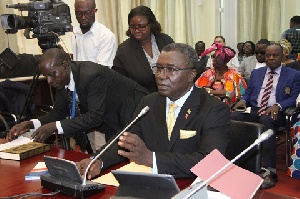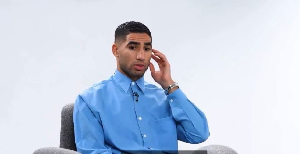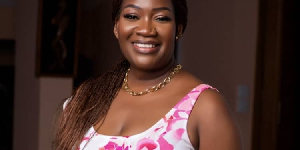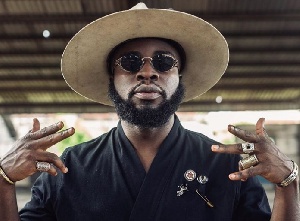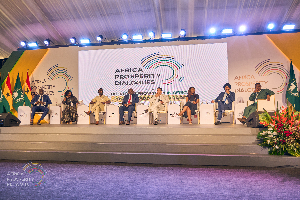Government is set to clamp down on galamsey operations as a measure to restore water bodies in the country, Professor Kwabena Frimpong-Boateng, Minister of Environment, Science, Technology and Innovation announced on Monday.
He said as part of plans to clamp down on illegal mining, the government would ban the dredging of water bodies and rivers which were usually carried out by illegal miners to allow the water bodies to contain the volume of water it was supposed to, even in the raining seasons.
“That would also help curtail flooding of the water bodies when it rains and help restore the polluted rivers”, Prof Frimpong-Boateng explained in an interview with journalists in Accra on the sidelines of the regional workshop on “Building Resilience through Innovation, Communication Knowledge Services (BRICKS) Project in Accra.
He said Ghana continued to face land and water issues including drying of rivers, polluted water bodies and overgrazing of grassland, all leading to land degradation.
“Now all the major rivers are polluted to the extent that in some cases their water cannot be treated with methods employed by the water treatment companies.
“The surface water is no longer safe for domestic and agricultural purposes. It is only a question of time that the ground water that we rely on will be equally polluted. At this point our very existence will be in danger,” he said.
He said since water and lands are finite, there was the need to work to manage and preserve what was existing for posterity.
Professor Frimpong-Boateng welcomed the BRICKS project which was being implemented in 12 African Countries including Ghana, Nigeria, Ethiopia, Mali, Burkina Faso and Togo, with the aim of improving the resilience of landscapes and peoples’ livelihoods and contributing to poverty reduction and kerbing the degradation of natural resources.
At the opening of a three-day regional workshop, which is aimed at promoting collaboration and building a community of practice through the use of social media and collaborative web tools among the partners of the BRICKS project to disseminate information among stakeholders, Frimpong-he commended the partners for responding to the needs of most African countries and working to restore lost vegetation.
At the workshop, the capacities of participants including media personnel, agricultural extension officers as well as technocrats were being built on the use of web 2.0 tools and other communication tools to help promote effective knowledge sharing for effective, efficient and timely implementation of the BRICKs programmes.
Mrs Saadia Bobtoya Owusu-Amofah, REDD Project Officer at the International Union for Conservation of Nature (IUCN) said three organisations made up of the Permanent Inter-States Committee for Drought and Desertification Control in the Sahel (CILSS), the Sahara and Sahel Observatory (OSS) and the (IUCN) were the implementing partners of the BRICKs Project which was established in 2014 and being funded by the World Bank over a six-year period.
She explained that the various partners had their specific functions and responsibilities being played to ensure effective land and natural resources management under the Sahel and West Africa programme (SAWAP) region.
Mrs Owuw-Amofah urged participants to work together to optimise communications and interactions between the SAWAP community and its partners and the wider public as a way of helping to contribute to the improvement of the livelihoods of millions of Africans.
Ms Felicite Mangang Officer in charge of Communication at IUCN said the BRICKS project falls under a one billion dollar World Bank funding all aimed at improving resilience in land use and preserving water sources in Africa.
Regional News of Tuesday, 14 February 2017
Source: GNA





